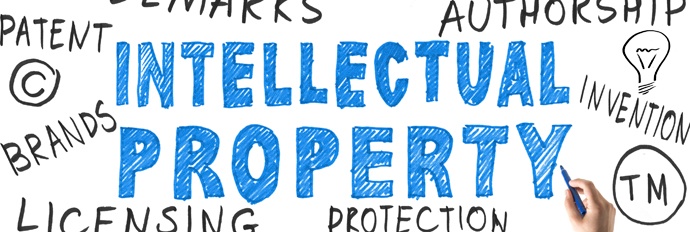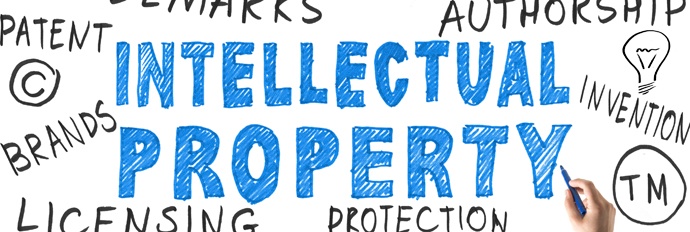Marketing KPIs & Benchmarks for 2026
We work with B2B leaders every day who have extensive marketing data, but don't know what to make of it. It's hard to know you're on track to meet...
3 min read
Katie Steelman Tue, May 24, 2016


Ever wished you could have a beer with a team of lawyers to pick their brains on things you should be considering as your company grows? We did just that, and we're sharing what we learned (plus some great local beer recommendations).
Legal expertise is something many companies bring in only when they’re midway through a strategic change such as:
Michele Nichols sat down with Greg Gribben and Katie McGuire of Woods Oviatt Gilman, the legal team that was consulted by the owner of two advanced manufacturing companies that Launch Team was helping to merge into a single, more powerful brand.
Greg, a partner in the firm's business and finance department, and Katie, a partner, patent attorney and chair of the IP group, are experts in trademark and entity discovery, two vital considerations during a company’s rebranding process. They shared with us some war stories and lessons learned from their experiences. (Launch Team notes are italicized.)
Check the end of the post for this week's local beer selection.
Michele: What should companies consider when renaming or rebranding?
Greg: You have to look in the jurisdiction where you were formed, and check that no one else has that same name. Even if you formed in Delaware, if your office is in New York you have to register to do business in New York. But all that means is that the company name is available. Someone else might have trademark rights, either registered or common law, through usage of a business name. So that’s where you want to do a trademark search, first in the registered databases and then a broader content search of all websites, magazines, newspapers, and other media to see whether anyone is using that name or has acquired rights to it. Otherwise you may form the company, and get a cease and desist letter that says you can’t use that name.
It’s two-pronged: make sure the corporate name is available, and make sure you’re not infringing anybody else.
Michele: How early in the process should companies be doing these searches?
Greg: This should be considered right from the beginning, because you don’t want to spend a lot of resources—branding, preparing materials—for something you can’t use.
Katie: The U.S. Trademark Office will give precedence to whoever filed first. The examiner cannot consider things such as who used the name first; they can only consider who filed first. If you have priority of use, the case must go to the Trademark Trial and Appeal Board, which can get very expensive.
Katie explained that one of her clients, an alternative energy company, had spent many years investing in their brand and built a customer base before discovering it was nearly the same brand name as a west coast competitor. They attempted to trademark their name but the other company had filed first. Katie and her team petitioned to cancel the other company’s registration based on her client’s priority of use and nationwide presence.
Common law use is fine, but it’s only geographically where you’re using the mark and have become known. Once you get a federal trademark registration, you have nationwide rights as to any subsequent users. If there are any prior common law users, they become frozen in their geographic area of use, or they can challenge your registration if they have wide geographic reach.
We had to show that the client’s geographic scope was not just within New York State but nationwide. We did that by submitting evidence of the trade shows they attended, advertisements in nationally distributed trade magazines, and their internet presence—showing where their web traffic was coming from.
The internet is inherently international, so strategies like inbound lead generation certainly can change your geographic reach.
The Woods Oviatt team were successful in getting the other company’s trademark registration cancelled and their client’s issued.
That just goes to show you how people can think they have a bullet-proof registration, but it might actually be prone to cancellation by a prior user. It’s important to do a comprehensive search and not just a quick knock-out search.
In our work in naming and branding of companies and products, Launch Team sees entity, trademark and domain availability as critical, and something that should be considered early in the creative process.
Michele: How about niche companies with a global customer base?
Katie: Consider a global trademark strategy carefully. For example, U.K. is much harder on taglines and slogans than the U.S. This is true for patents as well—you are likely to have different claims in different countries, because they’ll face different inquiries. Whatever your strategy, competitive surveillance is key.
From both a marketing and IP perspective, monitoring your competitive landscape is important, but it is often overlooked by growing companies. This intel allows you to react quickly and position your company and product lines for competitive advantage.
Thank you to Greg and Katie for taking the time to talk with us about common challenges in branding, product launch and company growth. Watch for next week's post where they'll provide insight on some common IP challenges and considerations for companies in their second stage of growth.
Tasting Notes: This week’s tasting was two local craft beers ideal for spring, Sweet Tang grapefruit lager by Hamburg Brewing Company in Buffalo, NY, and Ithaca Flower Power IPA, hoppy with a bit of citrus.

We work with B2B leaders every day who have extensive marketing data, but don't know what to make of it. It's hard to know you're on track to meet...

Get a Competitive Edge with Comprehensive AI & GEO Insights If you are beginning to notice an erosion in organic traffic and leads, it may be time to...

Updated on 6/10/24 The 80/20 rule or Pareto principle, is a long-standing business strategy that a lot of companies are applying right now to...